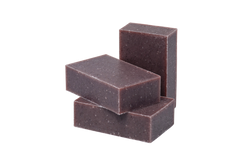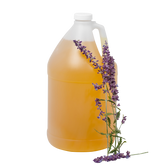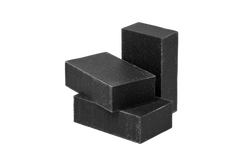
Essential oils have been used for religious, healing and aesthetic purposes for thousands of years. Recently, they have once again become mainstream as popular stores and brands began selling them and consumers are becoming better educated about their uses. At Botanie, our soaps are scented with high-quality essential oils. The process of refining essential oils for our soap and other uses is quite intensive and requires elaborate tools. Here’s how it works.
What Is an Essential Oil
An essential oil is a highly-scented compound extracted from plants. Essential oils are often used to scent cosmetics and candles, applied to the skin and diffused in the air. Some examples include lavender, mint, orange and tea tree.
How to Make Essential Oils

There are multiple methods for refining essential oils. It is believed that ancient Egyptians used a solvent of animal fat to extract the oils along with distillation pots. Today, the method used depends on the factory’s equipment, the type of plant and a variety of other factors. These methods include distillation, expression, enfleurage and the use of solvents and carbon dioxide.
Distillation
Distillation is the most popular method for creating essential oils and can even be done at home with the correct materials. Using a large, stainless steel or copper Still, steam is injected through the plant material, turning the scent molecules into a vapor. This vapor then enters a flask called a condenser where it is cooled back into liquid form. The liquid that comes out of the condenser is made up of water and oil which are then separated.
Expression
This technique is typically used for nut and seed oils. Often called “cold pressed” because no heat is used, expression is the process of putting the plant materials under high mechanical pressure to force the oil out.
Enfleurage
Popularized in 19th century France, enfleurage is perfect for delicate flowers and plants that cannot withstand distillation or expression. This technique uses oil to soak up other oils. The flower or plant you are extracting oil from is placed on top of a thin layer of oil on a glass plate, and, after a while, the base oil absorbs the scented oil from the plant.
Solvents and Carbon Dioxide
When extracting oil using solvents, the plant is mixed with a solvent such as acetone and agitated or shaken for a significant amount of time. This will release the essential oil into the solvent. When a lot of pressure is put on carbon dioxide (CO2) it turns into a liquid solvent, which can then be used to extract the essential oil in the same way as acetone. Using carbon dioxide is a new but popular technique.
History of Essential Oils

In the past few years, at home use of essential oils in the United States has taken off. It seems like every store now carries oils and oil diffusers. We have also seen an increase in the medical use of essential oils. The use of essential oils for everyday ailments and more serious medical issues might seem new, but the use of essential oils actually dates back to a time long before Instagram made the practice popular. However, even though this practice is age-old, producers and governing bodies are still debating how essential oils should be regulated and labeled for public sale. This article dives into the history, current status, and optimal use of essential oils.
While it might feel like the popularity of essential oils is very recent, the use of plants and oils for medicinal and everyday purposes dates back to prehistoric times – over 20,000 years ago. The Egyptian, Greek and Persian people along with many other civilizations all had elaborate essential oil techniques. Moving into the middle ages, the Catholic Church declared essential oils to be inappropriate and anyone caught using them were accused of witchcraft and severely punished. By the 1600s, use of essential oils was beginning to be accepted again and by the 1800s they were prescribed by doctors for various ailments. Today, oils are used in many homes and hospitals around the country for everyday issues and more serious illnesses. While the United States is a few steps behind other countries around the world in the medical application of essential oils, common use and knowledge of their benefits continue to increase.
Essential Oils Regulations
Unfortunately, the sale of essential oils is not heavily regulated. The Food and Drug Administration, FDA, has the responsibility for regulating items such as foods, cosmetics, and medications which means they are in charge of regulating essential oils. The FDA qualifies essential oils as either drugs or cosmetics. The decision on how the FDA qualifies the oils into one of the aforementioned categories is based on the intended use of the product. Since drugs and cosmetics are regulated very differently, and many oils are considered cosmetic, essential oils typically do not require the same preparation and packaging standards as drugs. Because of this, it is important to make informed purchases, looking for essential oils from a trusted source that provides quality, pure essential oils instead of ones that have been mixed with other oils or have been packaged or stored incorrectly.
Essential Oil Benefits
With over 90 types of essential oils that each have their own supposed health benefits, there are many options to choose from. While no specific health benefits are proven for essential oils there are many people and medical practices that believe in the healing and enhancing powers of applying the oil to the skin or inhaling it through air diffusion. Here are some popular oils and some of their believed health benefits:
- Lavender– Calming, reduces anxiety and promotes burn healing
- Lemongrass– Cleansing, antiviral and insect repellent
- Tea Tree– Immune system support, anti-fungal and antibacterial
Essential oils such as these can be used in many ways such as applying to the wrists, feet, or forehead, in a recipe for a natural home cleaner, diffused into the air or even mixed into homemade soap. However you decide to use essential oils be sure to purchase quality, pure oils such as the ones located in our store.
Folded Essential Oils for Soapmaking
For soapmakers, and well-informed non-soapmakers, explaining what folded essential oils are might not be hard. For others, it probably is. In fact, there are some of us at Botanie who only just learned the answer.
Low Pressure
As a group, folded essential oils undergo extended distillation and concentration, most often through fractionating, a low-pressure “re-distillation” that isolates the chemical components of a substance in order to alter their balance. In the case of folded essential oils, the alteration is nearly always the removal of terpenes. Folding is most common with citrus oils, which are high in terpenes – the building blocks of essential oils – and can afford to lose some to fractionating.
Characteristics
Though folded essential oils are frowned on for aromatherapy purposes, they are valued in other circles for particular reasons. They tend to be more concentrated, stronger oils, believed by some to be purer versions of the plant or fruit they came from. Plus, the removal of terpenes in folded oils has two distinct benefits. Since they are the most volatile component of essential oils, removing terpenes extends the life of the oil, in the bottle and in the products that include them. Terpenes are also the component that makes essential oils phototoxic, or photo-sensitive, a characteristic that makes the skin increasingly vulnerable to sunlight.
What About Soap?
Phototoxicity isn’t a concern with soap, because it’s a rinse-off product and any essential oil left on the skin is too minimal to worry about. In lotions and lip balms, though (leave-on products) photoxicity can be a concern, which is why folded essential oils – with terpenes removed – are so popular for use in cosmetics. Fewer terpenes allow for essential oils to be used in skin and hair-care formulations without concern for exposure to the sun.
Fragrance Oil vs. Essential Oil

Consider some requests we’ve heard:
“Can you make a soap that smells like pears? Strawberries?”
“Can you make grape, bubblegum, birthday-cake soap?”
“How about the ocean? Tuna casserole?”
OK. Not tuna casserole. But we have gotten requests for the others. Being certified, our answers always return to what’s allowed and what people should want in an all-natural, organic soap, especially the ingredients providing its scent. For soap and skincare, there are two primary sources of scent: Fragrance Oils and Essential Oils.
Fragrance Oils
This is easy to remember. Fragrance oils are always synthetic, even though they have perfectly natural names and might contain natural ingredients. Some synthetics – Caramel Bliss, for example – are easy to spot. Others aren’t so easy – Lemongrass, for instance. To further the confusion, many products combine the words “natural” and “fragrance” on their labels, and many of the major natural-product brands use synthetic fragrances in their skincare products.
A product might call itself natural, and it might be found in a natural products store. Still, its scent might be synthetic. If it isn’t natural, what that means for most people is dry skin. What it means for many others is irritation.
Essential Oils
These are the good scents, and product labels will always say “essential oils” if that’s how the product is scented. Essential oils are concentrated plant extracts, obtained from the roots, bark, and leaves of plants, usually through steam distillation, but in the case of citrus oils, through cold-pressing. Sadly, for fans of these other fragrances, non-citrus fruit scents – apple, pear, berries – are nearly always synthetic.
The Smell Test
There’s virtue in products as natural as your skin. There are also practical benefits to using essential oils for scenting skincare products. As plant extracts, essential oils used in proper proportions don’t irritate the skin. We have customers with bad cases of eczema that can still enjoy our scented bars, because the scent is naturally compatible. Natural scents also smell better. They smell real, especially to men. Essential oils contain none of the synthesized perfume bases found in fragrance oils, and in smell tests, people invariably express a preference for the natural.
What’s Listed Isn’t Everything
Labels are only as complete as they’re required to be. Vocabulary can be tricky, and some ingredients simply don’t appear on labels – or they appear under an assumed name – to avoid consumer backlash. Palm oil, for instance. The environmental disaster created by unsustainable production has caused many manufacturers to commit exclusively to sustainable palm oil. It’s caused others to simply hide the fact that they’re using plantation oil, either not listing it all or calling it vegetable oil instead.
Sometimes It’s Absolutely Clear
Natural products make the picture more confusing. Everyone wants to be seen as natural, but since there are no official standards, the appearance of natural is the best we often get. There is one instance, though, where differences are clear. When it comes to how skincare is scented, and sometimes colored, there’s an easy rule of thumb.
If you read the label for a “natural” soap and you see essential oils listed, it means the scent for the soap was derived from natural aromatic compounds found in the seeds, bark, roots, and flowers of plants. On the other hand, if you see the terms fragrance oils, aromatic oils, or perfume oils, it means what you’re looking at was scented with compounds that came from a lab, an artificial scent full of artificial ingredients.
Nothing Natural, Nothing Surprising
In the end, there’s nothing unexpected about synthetic fragrances. They behave in skincare products the way most synthetic ingredients do. They dry out the skin. They irritate sensitive skin in particular. They introduce thousands of artificial substances into our water. They also give manufacturers the chance to sell you multiple products – cleansers to dry your skin and lotions and conditioners to make it better again.
Choosing High-Quality Essential Oils
With many different types of plants and ways to extract oil from them, it can be difficult to find true, high-quality essential oils. Here are a few tips for making sure the oils you are purchasing are good quality:
- Beware of synthetic fragrances: Some scented oils are packaged like essential oils but are actually just synthetically scented base oils. In order to do this, be sure the bottle mentions something about it being “100% essential oil” or “pure” and read any available ingredient lists.
- Don’t choose the cheapest option: As you can see, the process of extracting essential oil is time consuming and requires specific materials. Because of this, high prices generally reflect higher-quality oils.
- Take a smell of the oil: If you take a sniff and smell alcohol or a scent that doesn’t match the oil listed on the bottle, it might be cut with something, which means it is a lower-quality oil.
Essential Oils Market
Essential oils sales are soaring and the trend doesn’t look to be slowing down. The market is estimated to reach $11.67 billion by the year 2022, according to Grand View Research Inc. The uses of essential oils range from aromatherapy to topical use and the benefits of these products are no mystery to consumers.
The soap industry is no stranger to the use of essential oils. They are often used in the soap making process to provide quality, natural scents to their products. So, for a company focusing on quality and an emphasis on natural products, essential oils must also meet these high standards.
The essential oil industry poses an interesting dilemma for consumers, considering the lack of agreed-on standards and inspection agencies. Just as with any product, there are levels of quality among essential oils and there are numerous ways to spot the high-quality oils from those of a lower quality.
Essential oils can be “pure,” meaning there are no additives or diluents included in the product. There are also “synthetic” oils, which ultimately consist of a cheaper oil, such as vegetable oil, with a scent added to the base in order to give the impression of a “pure” oil. There are a few processes you can go through in order to make the distinction.
The first one of these processes is to look out for misleading or deceptive phrases. For example, the words “Nature Identicals” commonly show up on essential oil products. Really though, this term is basically a code word for synthetic! On the other end of the spectrum however, the term “therapeutic grade” usually implies a higher quality oil.
Packaging

Pay attention to the packaging! Pure essential oils require packaging in glass containers to avoid the breakdown of plastics or other chemical reactions that might take place between the chemical compounds of the oils and the plastic itself. The glass should also be a dark color in order to avoid any adverse effects from UV rays. One simple test to perform when inquiring about the purity of essential oils is to place a few drops of the product in water. If the water appears cloudy upon application, then the change in opacity signifies an additive or diluent.
Recognize the Plant

Additionally, it’s not a bad idea to familiarize yourself with the Latin names of plants. Through this knowledge, the ingredient labels are better deciphered and allows you to determine what plants the oils actually originated from. On a similar note, know which portion of the plant was used in order to create the oils. For example, oil made from cinnamon bark is always of higher quality than that of oils generated from cinnamon leaf. The cinnamon leaf would also be at a cheaper point, which is another possible indication of its lower quality.
Essential Oils Suppliers
The most important aspect to consider when purchasing essential oils really boils down to knowing your supplier. You want to purchase from a supplier that is trusted and either distills their own products or works very closely with the distillers. When you can trust your supplier, you know you’re receiving a quality product. Don’t be afraid to ask questions! Understand the supply chain and the origin of the plants your essential oils came from. These are a few of the reasons why people often purchase from larger companies such as doTerra, who have established their credibility.
Honestly, purchasing essential oils that meet the high standards of soap-makers presents a challenge, but finding a trustworthy supplier reduces some of the strain. Using these tips will help you distinguish quality essential oils.




